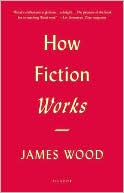Category Books
- Fiction Books & Literature
- Graphic Novels
- Horror
- Mystery & Crime
- Poetry
- Romance Books
- Science Fiction & Fantasy
- Thrillers
- Westerns
- Ages 0-2
- Ages 3-5
- Ages 6-8
- Ages 9-12
- Teens
- Children's Books
- African Americans
- Antiques & Collectibles
- Art, Architecture & Photography
- Bibles & Bible Studies
- Biography
- Business Books
- Christianity
- Computer Books & Technology Books
- Cookbooks, Food & Wine
- Crafts & Hobbies Books
- Education & Teaching
- Engineering
- Entertainment
- Foreign Languages
- Game Books
- Gay & Lesbian
- Health Books, Diet & Fitness Books
- History
- Home & Garden
- Humor Books
- Judaism & Judaica
- Law
- Medical Books
- New Age & Spirituality
- Nonfiction
- Parenting & Family
- Pets
- Philosophy
- Political Books & Current Events Books
- Psychology & Psychotherapy
- Reference
- Religion Books
- Science & Nature
- Self Improvement
- Sex & Relationships
- Social Sciences
- Sports & Adventure
- Study Guides & Test Prep
- Travel
- True Crime
- Weddings
- Women's Studies
How Fiction Works » (Bargain)

Authors: James Wood
ISBN-13: 9781616842437, ISBN-10: 1616842431
Format: Paperback
Publisher: Picador USA
Date Published: July 2009
Edition: Bargain
Author Biography: James Wood
James Wood is a staff writer at The New Yorker and a visiting lecturer in English and American literature at Harvard. He is the author of two essay collections, The Broken Estate and The Irresponsible Self, and of a novel, The Book Against God.
Book Synopsis
What makes a story a story? What is style? What’s the connection between realism and real life? These are some of the questions James Wood answers in How Fiction Works, the first book-length essay by the preeminent critic of his generation. Ranging widely—from Homer to David Foster Wallace, from What Maisie Knew to Make Way for Ducklings—Wood takes the reader through the basic elements of the art, step by step.
The result is nothing less than a philosophy of the novel—plainspoken, funny, blunt—in the traditions of E. M. Forster’s Aspects of the Novel and Strunk and White’s The Elements of Style. It sums up two decades of insight with wit and concision. It will change the way you read.
The Barnes & Noble Review
At its modest best, James Wood's first book-length study reasserts an idea that most average readers already assume: that literature is a reflection and imitation of reality, that art connects us to the world, and that style serves as our best measure of that connection. Of course, literary academics, for the most part, deny most of these once commonplace notions. And Wood -- one of the most celebrated and controversial writers on fiction currently working -- isn't exactly sure who his audience is for this otherwise sensible and cleanly written meditation. Make no mistake: far from a how-to or beginner's guide to fiction, this collection of 123 little pieces ranges from instructive anecdotes to head-on engagements with some heavyweight critical theorists. This impressive range produces its own drawback -- Wood maintains multiple levels of diction that will confuse those expecting the graceful style on display in so many of his much-admired essays.
Table of Contents
A Note on Footnotes and Dates 4
Narrating 5
Flaubert and Modern Narrative 32
Flaubert and the Rise of the Flaneur 39
Detail 48
Character 75
A Brief History of Consciousness 107
Sympathy and Complexity 128
Language 137
Dialogue 161
Truth, Convention, Realism 168
Bibliography 188
Index 192
Subjects
 Literary Criticism
Literary Criticism  Genres & Literary Forms
Genres & Literary FormsReference
 Writing
Writing  Fiction Writing
Fiction WritingNonfiction
 Reference
Reference  Writing
Writing
